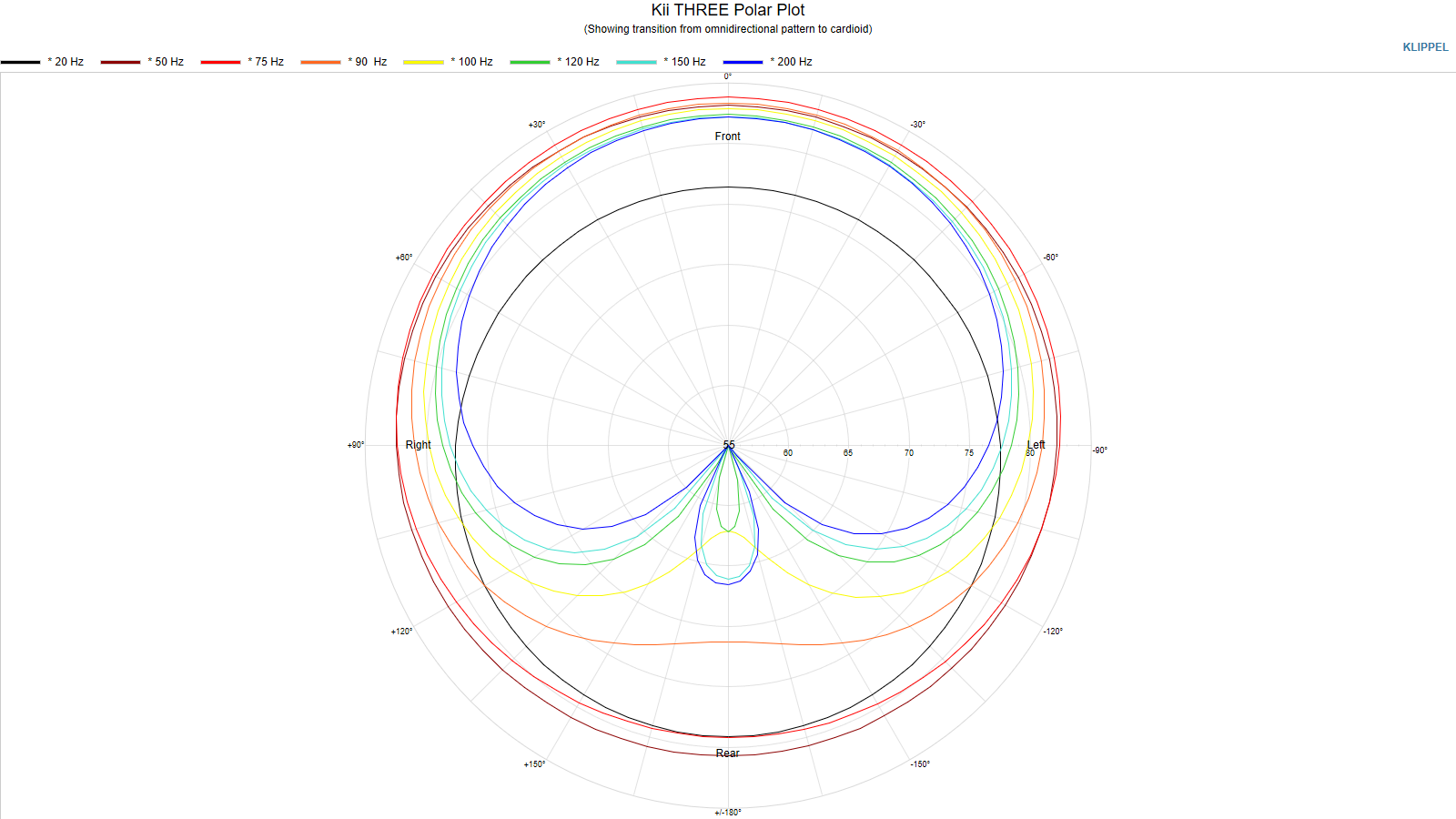Yo, I wrote my Excell script again. It is meant to show the influence of a wall behind a cardioid from first priciples. That means no baffle, just point sources with distance and delay.
Same as I told You before. A nearby wall alters the pattern. It depends on wall distance and frequency. So, three parameters, namely distance, frequency, direction. I cannot discuss it here. I cannot find a presentation, that would reveal the effects to people, who are not used to read unfamiliar diagrams.
Take-home message: despite the saying, that cardioid doesn't radiate to the back, the wall behind a 'cardiod' labeled speaker is of relevance. That much, that it possibly renders the cardiod properties defunct.
To understand this claim needs an understanding of physics and mathematics way beyond all-day knowledge. From experience I would expect a heated debate, when it comes to critisizing the next big thing. More demanding arguments would be torn to pieces and cluttered by misunderstandings.

